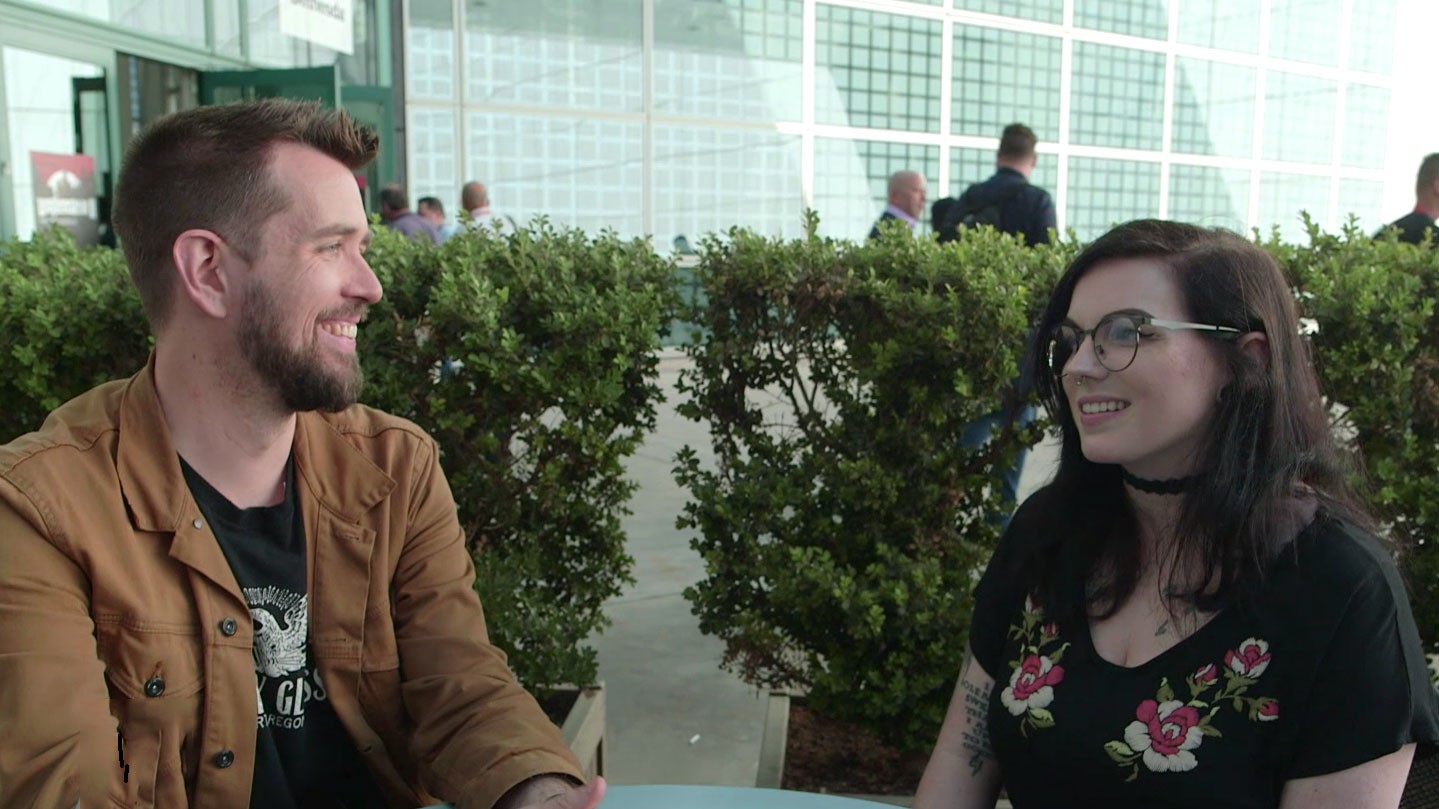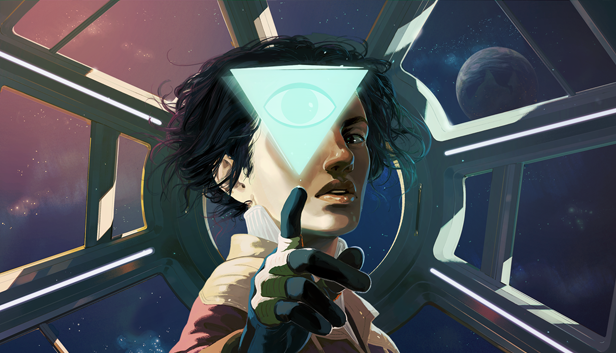With the August-due Tacoma, Fullbright is moving away from the familiar, homely environments of critically acclaimed Gone Home. Far away, as the Portland, Oregon studio is taking its newest mystery to the stars. On a seemingly abandoned space station, the player is left alone to investigate the fate of the Tacoma's crew, with help from recorded holographic memories, rendered in augmented reality. While it's a radical aesthetic departure from Gone Home, a lot of the lonely atmosphere from Fullbright's first game remains.
Advertisement
You are the only person, the only living person, here. Tacoma, like Gone Home, cuts the player off from direct contact with other characters. Bleak weather surrounded the empty Greenbriar house in Gone Home, obscuring the outside world; and in Tacoma, it's the vastness of space that disconnects your experience from anyone else.It's not just Fullbright who present their first-person protagonists as loners within a given environment, who isolate them and relay all narrative elements through their perception and impressions alone. From Dear Esther and Everybody's Gone to the Rapture , to Firewatch and most recently What Remains of Edith Finch , so-called "walking simulators" have a noticeable habit of placing their protagonists at the center of a world, of a place, where nobody else can touch them.And in each, there's a pronounced physical distance between the player and the people who live, or have lived, in the environment they're moving through. Gone Home and Edith Finch are both focused on families, yet the player meets none of these relatives, in each game's present, during their stories. No matter how much you find out about the people that inhabit these worlds, you are still alone within them.
All Gone Home images courtesy of Fullbright
"When it came to Gone Home, other characters were never really on the table, because we knew we weren't capable of it," says Fullbright co-founder Karla Zimonja, when I ask if the studio's breakthrough was always designed with isolation in mind. "But when we think of it, Gone Home was based off of some other aspects of the BioShock series, because the characters that you interact with, that aren't enemies, are usually obstructed from the player."
Advertisement
It's worth noting that Zimonja is one of three Fullbright founders who worked on the Minerva's Den DLC for BioShock 2. But while the BioShock games do often keep their protagonists distanced from non-player characters, those who aren't trying to kill them at least, Gone Home and Tacoma remove them entirely. That's a story decision, of course, but it's also a reflection of the technical limitations of a smaller studio, beside a larger, triple-A operation with more staff on hand."Once you have characters in the room with you, there are requirements," Zimonja explains. "Firstly, they have to look acceptable, which can be pretty broad given [the many] styles of character design and execution. If they're literally around you, they have to interact with you, or the developer has to think of a really good reason why they wouldn't. You must be able to speak to them, probably, and how does that happen? Essentially, [adding more characters] is a can of worms—a real big and expensive can of worms."
All What Remains of Edith Finch screens courtesy of Annapurna Interactive
Ian Dallas is the creative director of What Remains of Edith Finch, developed by Giant Sparrow and released in April 2017. He agrees that placing extra characters into a game like Edith Finch or Gone Home requires an incredible amount of effort—and he experienced this first-hand, when the addition of just a few, brief glimpses of other characters in Edith Finch took a member of the studio a long time to create.
Advertisement
"We had a brilliant animator working for a year to produce the people you see in Edith Finch, and even then we weren't going for realism. But the advantage of the game is that each of its stories is its own universe, so the proportions of the characters don't have to fit perfectly with each other, and they don't. A lot goes into character design, in terms of time and resources, and we wanted to focus on the stories."
Watch: Waypoint spoke to Fullbright's Steve Gaynor at E3 2017
Both Dallas and Zimonja worry that a badly realized character, a poorly animated NPC, can and likely would break the immersion of their games. Nevertheless, there are recognizable figures, at least, in Tacoma—the station's holograms are very clearly human of shape and movement."We wanted to build upon the structure of Gone Home, without completely repeating ourselves," says Zimonja. This led to the Fullbright team experimenting with different features, before settling on the augmented reality recordings of the Tacoma crew— there, in the physical space, but unable to be interacted with. To make them react to the player would have been, Zimonja says, "too much of a process, too much of a resources and time sink.""We didn't think we could surpass the work of bigger teams with our original four people," she adds, "and even though with Tacoma we're now eight people, it's not that big of a difference when it comes to resource allocation."
Watch: Waypoint spoke to Fullbright's Steve Gaynor at E3 2017

Both Dallas and Zimonja worry that a badly realized character, a poorly animated NPC, can and likely would break the immersion of their games. Nevertheless, there are recognizable figures, at least, in Tacoma—the station's holograms are very clearly human of shape and movement."We wanted to build upon the structure of Gone Home, without completely repeating ourselves," says Zimonja. This led to the Fullbright team experimenting with different features, before settling on the augmented reality recordings of the Tacoma crew— there, in the physical space, but unable to be interacted with. To make them react to the player would have been, Zimonja says, "too much of a process, too much of a resources and time sink.""We didn't think we could surpass the work of bigger teams with our original four people," she adds, "and even though with Tacoma we're now eight people, it's not that big of a difference when it comes to resource allocation."
Advertisement

Putting immersion issues and resource management to one side, Zimonja and Dallas alike are keen to emphasize the merits of creating a lonely world. It's also a deliberate creative choice to not include other characters in these games.And if any NPCs were to exist in them, the player, often essentially a voyeur in someone else's story, would look to them for explicit answers, rather than piece together these narratives for themselves. Because, as Dallas says, "The history of NPCs in video games is to be alternately helpful, or quite a pain in your ass. They tend to serve these roles."Environmental storytelling offers a more dynamic approach to narrative design, with players discovering the story for themselves, at their own pace. "In our case, our game is very much about the unknown," Dallas says. "It's about exploring spaces you don't understand, and that is certainly a more powerful experience when you are by yourself."And this element of "integrating the environment," as Dallas puts it, adds a crucial element to the genre. Although infamously downplaying traditional gameplay mechanics, these games, these "walking simulators" for want of another immediately obvious catchall, actively engage with the player in a way few games do, because the player is left alone.Whether it's piecing together clues or imagining the people that lived in the space you're exploring, Zimonja feels that "it's really powerful to give the player bits of information and allow them the space to connect those things. Its gives the player the benefit of the doubt and makes them more participatory." And, moreover, it allows players to immerse themselves within the narrative. "The game exists and you are allowed to have whatever experience and conclusions that you see fit, and it doesn't matter what we say."
Advertisement
Related, on Waypoint: Video Games Don't Have a Choice But to Tell Stories.
Tacoma will continue this tradition, and it's not just because Fullbright couldn't do otherwise. There are a lot of positives that come from giving the player both time and space to digest the story on their terms. There are a lot of reasons why studios might not manage to implement full-fleshed characters, from budget to time restraints or general resource management. These might prevent a studio from pursuing additional characters in their games, but there are reasons they might not want to in the first place. Games like Gone Home and Dear Esther might lack the more advanced gameplay mechanics that others have, but the relationship to the player is entirely unique.
Looking at Tacoma, Zimonja is adamant that adding characters wasn't something they couldn't do, but was something they never wanted to do in the first place. To Fullbright, the isolation of the player is a cornerstone of the genre. Perhaps, as this genre continues to evolve, we will see a shift in the design process, where the narrative more directly revolves around the player, incorporating others in the same space—but it's vital that the connection between game and player, built so steadfastly on loneliness, isn't compromised."When you get the balance right, when the player does a little work on behalf of the game, it's easier for them to feel a greater ownership and investment in it," says Zimonja. "If you give them a little bit to imagine, and the space to do it themselves, then they've made their own version of that and they now have a little bit of the story already inside their head. They're no longer just looking at it. They've absorbed it, and it's a part of them now."What Remains of Edith Finch is available now for PC and PlayStation 4. Tacoma is released for PC and Xbox One on August 2 nd .Follow Rosh on Twitter